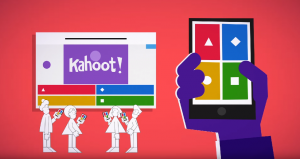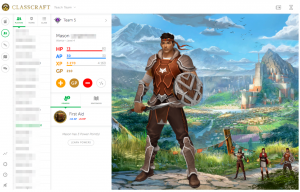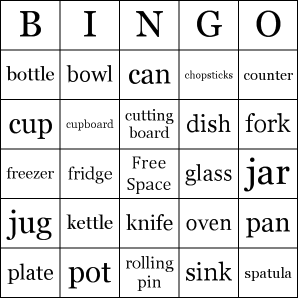What is more engaging than playing a game? According to Oxford Online Dictionary, gamification is defined as the application of typical game-play elements, including rules of play, point scoring, and competition, into other  areas of activity, especially to engage participants in problem solving. Gamification is a great way to increase engagement and motivation in learning. As a result, many educators are finding creative ways to integrate gamification strategies into their lesson plans. This article offers specific ideas for ways to gamify the classroom. This article identifies more ways to gamify education.
areas of activity, especially to engage participants in problem solving. Gamification is a great way to increase engagement and motivation in learning. As a result, many educators are finding creative ways to integrate gamification strategies into their lesson plans. This article offers specific ideas for ways to gamify the classroom. This article identifies more ways to gamify education.
 Numerous research findings highlight the many benefits of incorporating gamification into the classroom. For instance, research from Deakin University shows that incorporating math games into the curriculum had a substantial impact on students’ attitudes toward the subject. After playing math games, students were more motivated, and ultimately more successful, when completing math problems. The Australian Journal of Educational & Developmental Psychology conducted a study about the impact of gamification on students with ADHD. The study found that students who played a video game created to teach children how to control their breathing and heartrate significantly decreased their ADHD symptoms. Research carried out by the Lookstein Online Journal shows that children demonstrated significant cognitive growth when they were tasked with designing their own video game. This article discusses the importance of gamification for education.
Numerous research findings highlight the many benefits of incorporating gamification into the classroom. For instance, research from Deakin University shows that incorporating math games into the curriculum had a substantial impact on students’ attitudes toward the subject. After playing math games, students were more motivated, and ultimately more successful, when completing math problems. The Australian Journal of Educational & Developmental Psychology conducted a study about the impact of gamification on students with ADHD. The study found that students who played a video game created to teach children how to control their breathing and heartrate significantly decreased their ADHD symptoms. Research carried out by the Lookstein Online Journal shows that children demonstrated significant cognitive growth when they were tasked with designing their own video game. This article discusses the importance of gamification for education.
 I have participated in many gamified experiences throughout my
I have participated in many gamified experiences throughout my time in school. For example, many of my teachers created a Jeopardy game or used Kahoot! to review information before a test. Kahoot! is a game-based learning platform that allows teachers to create multiple choice quizzes and have students compete for the highest score. Also, my early childhood education class had the opportunity to attend a presentation about Classcraft, a classroom role-playing game.
time in school. For example, many of my teachers created a Jeopardy game or used Kahoot! to review information before a test. Kahoot! is a game-based learning platform that allows teachers to create multiple choice quizzes and have students compete for the highest score. Also, my early childhood education class had the opportunity to attend a presentation about Classcraft, a classroom role-playing game.
I am confident I will incorporate gamification into my classroom in order to actively engage my studen ts. For example, I could have my class play a game of Bingo in order to review vocabulary words. I would instruct students to write words from our vocabulary list onto their boards and then call out the definitions of these words. This activity would help students match words with their definitions. I could create a Kahoot! or Jeopardy game to review material for any subject. As a teacher, I will be able to incorporate gamification into my strategies for classroom management. For instance, I could give students points for completing homework assignments and having them out for me to check.
ts. For example, I could have my class play a game of Bingo in order to review vocabulary words. I would instruct students to write words from our vocabulary list onto their boards and then call out the definitions of these words. This activity would help students match words with their definitions. I could create a Kahoot! or Jeopardy game to review material for any subject. As a teacher, I will be able to incorporate gamification into my strategies for classroom management. For instance, I could give students points for completing homework assignments and having them out for me to check.